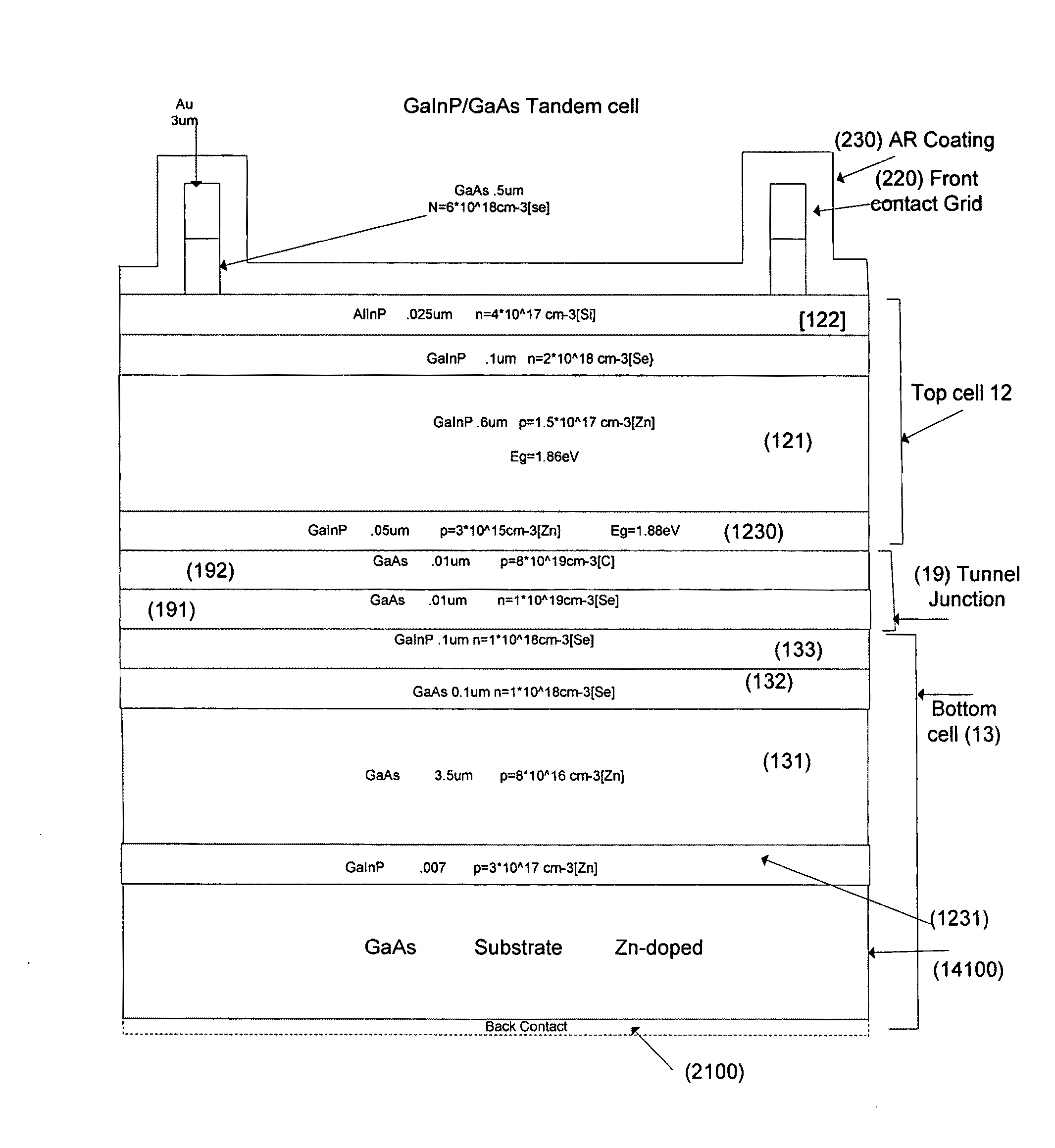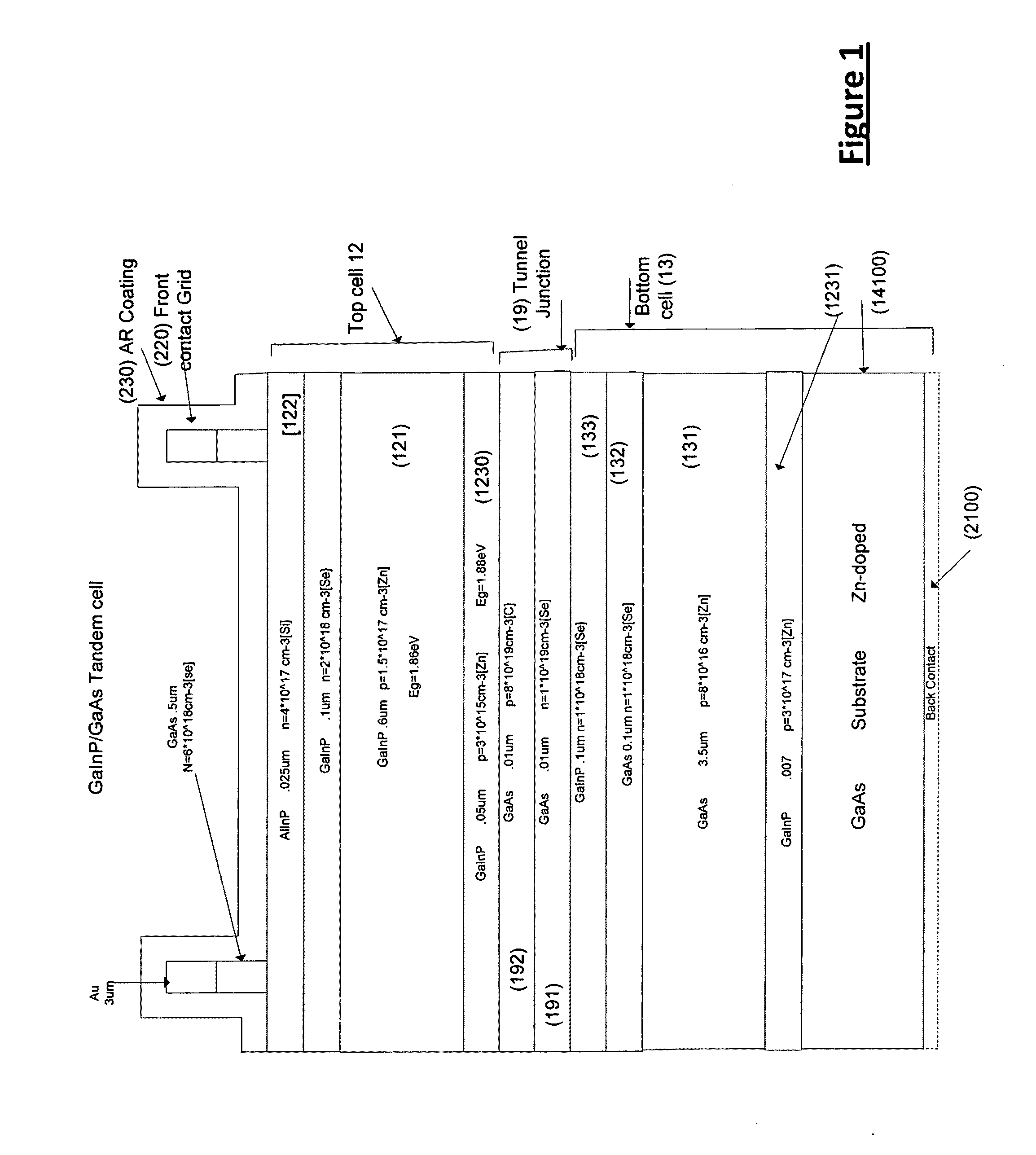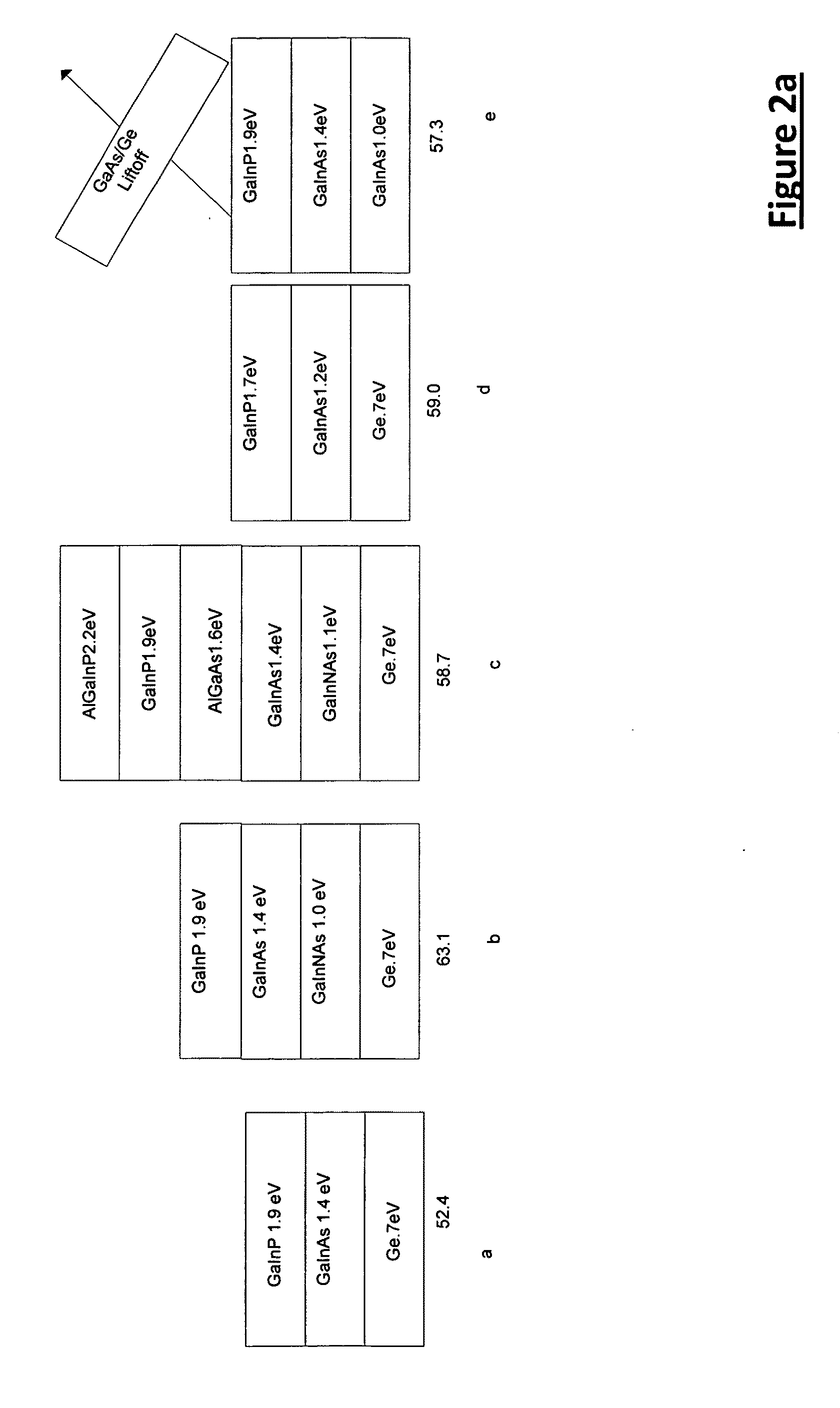High efficiency tandem solar cells and a method for fabricating same
a tandem solar cell, high-efficiency technology, applied in the field of tandem solar cells, can solve the problems of limiting the attainment of the predicted efficiency of triple junction iii-v cells, not efficiently harnessing the energy of photons, and iii-v cells with multiple junctions, etc., to achieve the effect of facilitating current flow
- Summary
- Abstract
- Description
- Claims
- Application Information
AI Technical Summary
Problems solved by technology
Method used
Image
Examples
Embodiment Construction
[0043]In accordance with the present invention, tandem solar cells and a method for fabricating the tandem solar cells is provided, whereby the solar cells efficiently harness solar energy in an energy range that conventional epitaxial Ge / GaAs / GaInP based tandem solar cells cannot efficiently harness energy. Additionally, a methodology to fabricate high efficiency solar cells on Si substrates using novel dislocation reduction technique is also provided.
[0044]In accordance with the invention, a solar cell is provided that incorporates wider energy gap materials to harness solar energy in the 2.2 eV to 3.7 eV range. This is advantageous because conventional epitaxial Ge / GaAs / GaInP based tandem cells do not efficiently convert energies from photons having energies in this range. As is shown and discussed herein below, the integration of multi junction cells that harness excess energy loss in the range of 2.2 eV-3.7 eV solar radiation, using Ge / GaAs compatible II-VI semiconductors such ...
PUM
 Login to View More
Login to View More Abstract
Description
Claims
Application Information
 Login to View More
Login to View More - R&D
- Intellectual Property
- Life Sciences
- Materials
- Tech Scout
- Unparalleled Data Quality
- Higher Quality Content
- 60% Fewer Hallucinations
Browse by: Latest US Patents, China's latest patents, Technical Efficacy Thesaurus, Application Domain, Technology Topic, Popular Technical Reports.
© 2025 PatSnap. All rights reserved.Legal|Privacy policy|Modern Slavery Act Transparency Statement|Sitemap|About US| Contact US: help@patsnap.com



